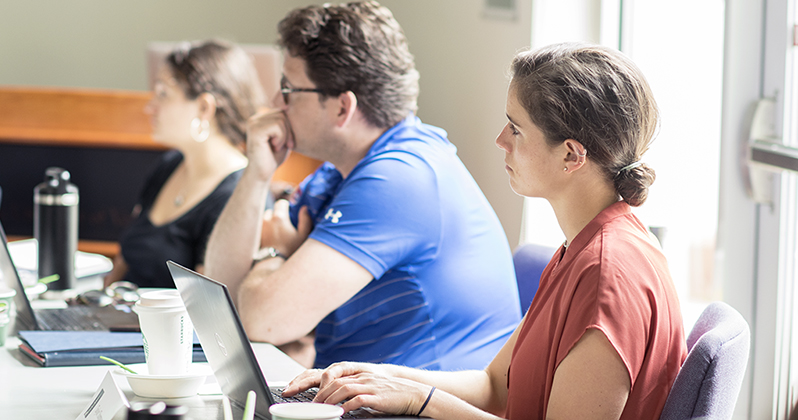Thinking about going back to school to earn a professional certificate, pursue your master’s or finish your bachelor’s degree? Has it been a while since you last set foot in the classroom or took a course? The world has clearly changed in the last several years, especially in the area of technology and online learning.
Most people couldn’t even access the web until the Mosaic browser was released in 1993. And if you remember completing assignments with a pen and paper instead of a keyboard, then you’ve seen your share of technological change.
Online Learning Options
Online education is growing exponentially in today’s digital age, and students who are interested in online learning should have some basic technology skills. Last year, more than a third of the nation’s 21.3 million college students took at least one online course, according to the annual Survey of Online Learning by Babson Survey Research Group and the College Board. That’s a more than 300 percent increase since 2002. The University of Vermont launched nine online courses in 1999; now there are nearly 200.
It’s Never Too Late to Become Tech Savvy
So, how might you prepare to return to college and pursue online learning in the digital age?
Carolyn Siccama, an instructional designer with the University of Vermont’s Continuing and Distance Education division, offers these tips if you’re considering an online course:
Take UVM’s Online Readiness Quiz. It measures four areas that are key to ensuring success in an online program: time management; support from family and friends; communication; and computer access. “You need to make sure you have access to a computer, and you need to make sure you have time to do your work,” Siccama explains.
Enroll in a hybrid course instead of a fully online course. Hybrid courses blend face-to-face meetings with online work. “It’s a really nice way for someone to try out ‘online’ if they’re not comfortable going fully online,” she says. “You still have one foot on campus.”
Brush up on any technology skills you’re lacking. Do you need to feel more comfortable with word-processing software? Spreadsheets? Basic computer and Internet skills? Siccama recommends checking out your local library or community education organization for free or low-cost classes. “It’s a good way to get your feet wet on a technology topic,” she says. In the Champlain Valley, try Access CVU at the Champlain Valley Union School District in Hinesburg or the Burlington School District’s Division of Continuing Education. Or you can explore YouTube or websites such as http://www.gcflearnfree.org or http://www.lynda.com for free how-to tutorials.
Access UVM’s library of resources and tutorials to help build your technology skills. They cover Blackboard, the online learning environment; university libraries and online research; and tools such as wikis, discussion boards, blogs, journals, tests, assignments and more. Blackboard already contains all the tools you’ll need to communicate with classmates and submit assignments including blogs, journals and discussion boards. Once you access Blackboard, there also are tutorials.
Connect with the UVM Tech Team. They can answer you questions and offer technology support.
Inform your professor if you are taking an online course for the first time. “When I teach online, I make sure I know which students are taking their first online course,” Siccama says. “I will go over and above, making them feel comfortable. Some people might be afraid to tell an instructor that it’s their first online course, but I think faculty appreciate knowing that.” Many instructors prepare videos or other tutorials that orient students to the course and the online environment, she says.
Make sure you have a decent Internet connection. “If someone has a really slow Internet connection, we can make it work, but it can be a challenge,” Siccama says. Even if your Internet connection is fast, your computer hardware and software may need to be updated – and memory freed up – to improve speed and access.
Check your browser to make sure it’s compatible with Blackboard. Currently, UVM CDE recommends the latest versions of Firefox or Chrome. Test out your capability for opening and accessing a PDF document and watching an online video. Luckily, Blackboard doesn’t require anything to be downloaded onto your computer; you simply access Blackboard online. However, find out if the course you’re taking requires any special software.
Most of all, remember that you’re not alone. Given the statistics, you’re not the only “older” student going back to school, taking courses, and in need of brushing up on technology skills. And, no matter what the age of other students, you always can ask your classmates for help. “It’s truly powerful how students can come together online and help each other and share ideas,” Siccama says.




